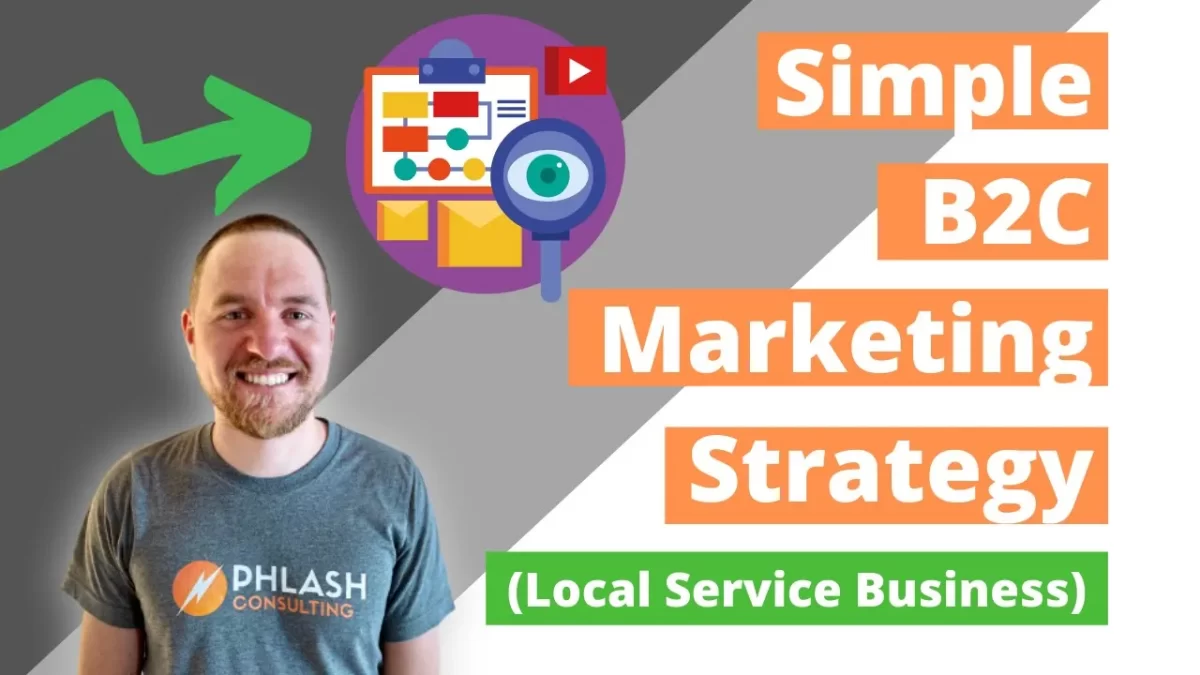How to Build a B2C Customer Journey Marketing Strategy for Local Service Businesses
How to Build a B2C Customer Journey Marketing Strategy for Local Service Businesses
In today’s post, we’re breaking down the essential B2C customer journey marketing strategy designed specifically for local service businesses. At Phlash Consulting, we’ve developed a step-by-step approach to guide clients through each stage of the customer funnel, helping them attract new leads, convert prospects, and build lasting relationships. Whether you’re looking to drive growth or improve customer retention, this strategy provides a clear roadmap to elevate your business!
Step 1: Attracting New Customers
The first step is generating new leads. There are multiple strategies to reach potential customers, but the most effective methods we’ve found are:
- Organic Search: Ranking high on search engines is crucial. When potential clients search online, being visible can make all the difference.
- Social Media Presence: Actively engaging on social media channels keeps you in front of customers.
- Ads and Promotions: Targeted ads, particularly on platforms like Google and Facebook, help capture leads searching for your services.
- Referrals and Direct Outreach: Asking for referrals, sending direct mail, or calling prospects directly are effective ways to reach out.
Each of these tactics works together to drive traffic to your website or prompt a direct call, turning interested visitors into leads.
Step 2: Converting Leads
Once potential customers enter the sales funnel—through your website or a phone call—the next goal is converting them to leads and eventually clients. Here’s the conversion path we recommend:
- Track Every Lead: Establish a simple, effective system for capturing leads.
- Streamline Appointment Scheduling: Make it easy for customers to schedule an appointment, whether online, over the phone, or through a service form on your website.
- Provide Clear Estimates or Pricing: Be transparent about pricing, as this helps build trust and expedites the decision-making process.
After an estimate, many leads convert into a sale, moving them forward in your customer journey.
Step 3: Post-Sale Engagement
Once the sale is made, customer engagement shouldn’t end there. By building lasting relationships, you encourage repeat business and referrals:
- Request Reviews: Positive reviews not only boost your credibility but also improve organic search results.
- Encourage Referrals: Satisfied customers are likely to recommend your service.
- Share Regular Updates: A monthly newsletter or occasional service updates keep customers informed and top of mind.
- Social Media Connection: Invite customers to follow your brand on social media and stay connected.
Digital Marketing Tools for Every Stage
Here at Phlash Consulting, we implement several digital marketing strategies to support each stage of the customer journey:
- On-Site SEO: Ensuring your website has relevant keywords, content, and optimized structures to attract organic traffic.
- Off-Site SEO: Managing listings, including Google My Business, so your service can be easily found online.
- Ads Management: Strategically running and tracking ads across platforms to reach new customers.
- Scheduling & CRM Tools: Implementing systems that simplify scheduling, track where leads originated, and monitor conversion rates.
With this setup, you’ll be able to attract and convert leads efficiently, with the added bonus of tracking where your sales are coming from, whether Facebook, Google, or direct outreach.
Measuring and Optimizing Performance
The next stage involves tracking and analyzing all aspects of the sales process:
- Track Lead Source: Understanding where your leads are coming from—be it social media, search engines, or referrals—allows you to invest in the most effective channels.
- Evaluate Conversion Rates: Measure the journey from lead to sale and calculate the ROI for each marketing tactic.
- Customer Retention Strategy: Focus on turning one-time clients into returning customers. From reviews to referral programs, newsletters, and social media engagement, these efforts foster long-term loyalty and increase lifetime customer value.
A Real-Life Example
With Phlash’s approach, we’ve seen clients achieve impressive conversion rates, some as high as 20% for lead-to-sale conversion. This level of efficiency enables businesses to generate steady streams of revenue and scale effectively.
Whether you’re working with Phlash or implementing these strategies on your own, setting up a customer journey framework will help keep your sales funnel filled and your business thriving!

